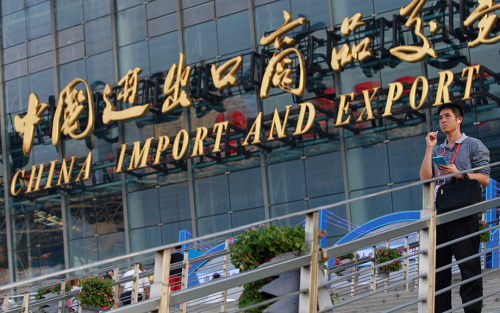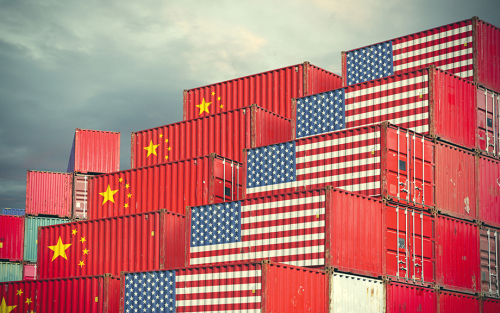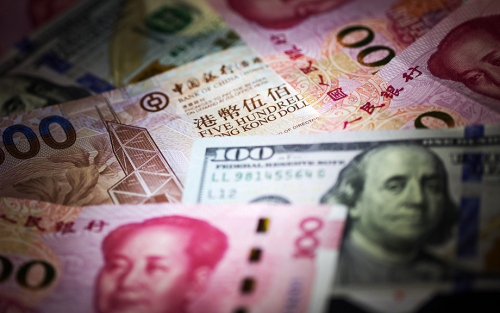How Does U.S. Monetary Policy Affect Emerging Market Economies?

The question of how U.S. monetary policy affects foreign economies has received renewed interest in recent years. The bulk of the empirical evidence points to sizable effects, especially on emerging market economies (EMEs). A key theme in the literature is that these spillovers operate largely through financial channels—that is, the effects of a U.S. policy tightening manifest themselves abroad via declines in international risky asset prices, tighter financial conditions, and capital outflows. This so-called Global Financial Cycle has been shown to affect EMEs more forcefully than advanced economies. It is because higher U.S. policy rates have a disproportionately larger impact on rates in EMEs. In our recent research, we develop a model with cross-border financial linkages that provides theoretical foundations for these empirical findings. In this Liberty Street Economics post, we use the model to illustrate the spillovers from a tightening of U.S. monetary policy on credit spreads and on the uncovered interest rate parity (UIP) premium in EMEs with dollar-denominated debt.
What Is behind the Global Jump in Personal Saving during the Pandemic?

Household saving has soared in the United States and other high-income countries during the COVID-19 pandemic, despite widespread declines in wages and other private income streams. This post highlights the role of fiscal policy in driving the saving boom, through stepped-up social benefits and other income support measures. Indeed, in the United States, Japan, and Canada, government assistance has pushed household income above its pre-pandemic trajectory. We argue that the larger scale of government assistance in these countries helps explain why saving in these countries has risen more strongly than in the euro area. Going forward, how freely households spend out of their newly accumulated savings will be a key factor determining the strength of economic recoveries.
The International Spillover of U.S. Monetary Policy via Global Production Linkages

Julian di Giovanni describes work with Galina Hale that employs an empirical framework to quantify the role of the global production network in transmitting U.S. monetary policy across international stock markets.
Has the Pandemic Reduced U.S. Remittances Going to Latin America?

Workers’ remittances—funds that migrants send to their country of birth—are an important source of income for a number of economies in Latin America, with the bulk of these funds coming from the United States. Have these flows dried up, given the COVID-19 recession and resulting unprecedented job losses? We find that remittances initially faltered but rebounded in the summer months, performing better than during the last U.S. recession despite more severe job losses. Large government income support payments probably explain some of this resilience. Whether remittances continue to hold up is likely to depend on how quickly the U.S. job market recovers, particularly in hard-hit service industries.
How Has China’s Economy Performed under the COVID‑19 Shock?
COVID‑19 Has Temporarily Supercharged China’s Export Machine
Reconsidering the Phase One Trade Deal with China in the Midst of the Pandemic

It may be hard to remember given the pandemic, but trade tensions between the United States and China eased in January 2020 with the inking of the Phase One agreement. Under the deal, China committed to a massive increase in its purchases of U.S. goods and services, with targets set for various types of products. At the time of the pact, the U.S. economy was operating near full capacity, and any increase in U.S. exports stemming from the pact would likely have resulted in only a small boost to growth. The environment is now starkly different, with the U.S. economy operating far below potential. While the promised increase in Chinese purchases seems unlikely to be achieved, any appreciable increase in exports from the agreement could deliver a meaningful boost to the economy.
Japan’s Experience with Yield Curve Control

In September 2016, the Bank of Japan (BoJ) changed its policy framework to target the yield on ten-year government bonds at “around zero percent,” close to the prevailing rate at the time. The new framework was announced as a modification of the Bank’s earlier policy of rapid monetary base expansion via large-scale asset purchases—a policy that market participants increasingly regarded as unsustainable. While the BoJ announced that the rapid pace of government bond purchases would not change, it turned out that the yield target approach allowed for a dramatic scaling back in purchases. In Japan’s case, the commitment to purchase whatever was needed to keep the ten-year rate near zero has meant that very little in the way of asset purchases have been required.
The Investment Cost of the U.S.‑China Trade War

Starting in early 2018, the U.S. government imposed tariffs on over $300 billion of U.S. imports from China, increasing the average tariff rate from 2.7 percent to 17.5 percent. Much of the escalation in tariffs occurred in the second and third quarters of 2019. In response, the Chinese government retaliated, increasing the average tariff applied on U.S. exports from 5.7 percent to 20.4 percent. Our new study finds that the trade war reduced U.S. investment growth by 0.3 percentage points by the end of 2019, and is expected to shave another 1.6 percentage points off of investment growth by the end of 2020. In this post, we review our study of the trade war’s effect on U.S. investment.
Modeling the Global Effects of the COVID‑19 Sudden Stop in Capital Flows

The COVID-19 outbreak has triggered unusually fast outflows of dollar funding from emerging market economies (EMEs). These outflows are known as “sudden stop” episodes, and they are typically followed by economic contractions. In this post, we assess the macroeconomic effects of the COVID-induced sudden stop of capital flows to EMEs, using our open-economy DSGE model. Unlike existing frameworks, such as the Federal Reserve Board’s SIGMA model, our model features both domestic and international financial constraints, making it well-suited to capture the effects of an outflow of dollar funding. The model predicts output losses in EMEs due in part to the adverse effect of local currency depreciation on private-sector balance sheets with dollar debts. The financial stresses in EMEs, in turn, spill back to the U.S. economy, through both trade and financial channels. The model-predicted output losses are persistent (consistent with previous sudden stop episodes), with financial effects being a significant drag on the recovery. We stress that we are only tracing out the effects of one particular channel (the stop of capital flows and its associated effect on funding costs) and not the totality of COVID-related effects.
















 RSS Feed
RSS Feed Follow Liberty Street Economics
Follow Liberty Street Economics